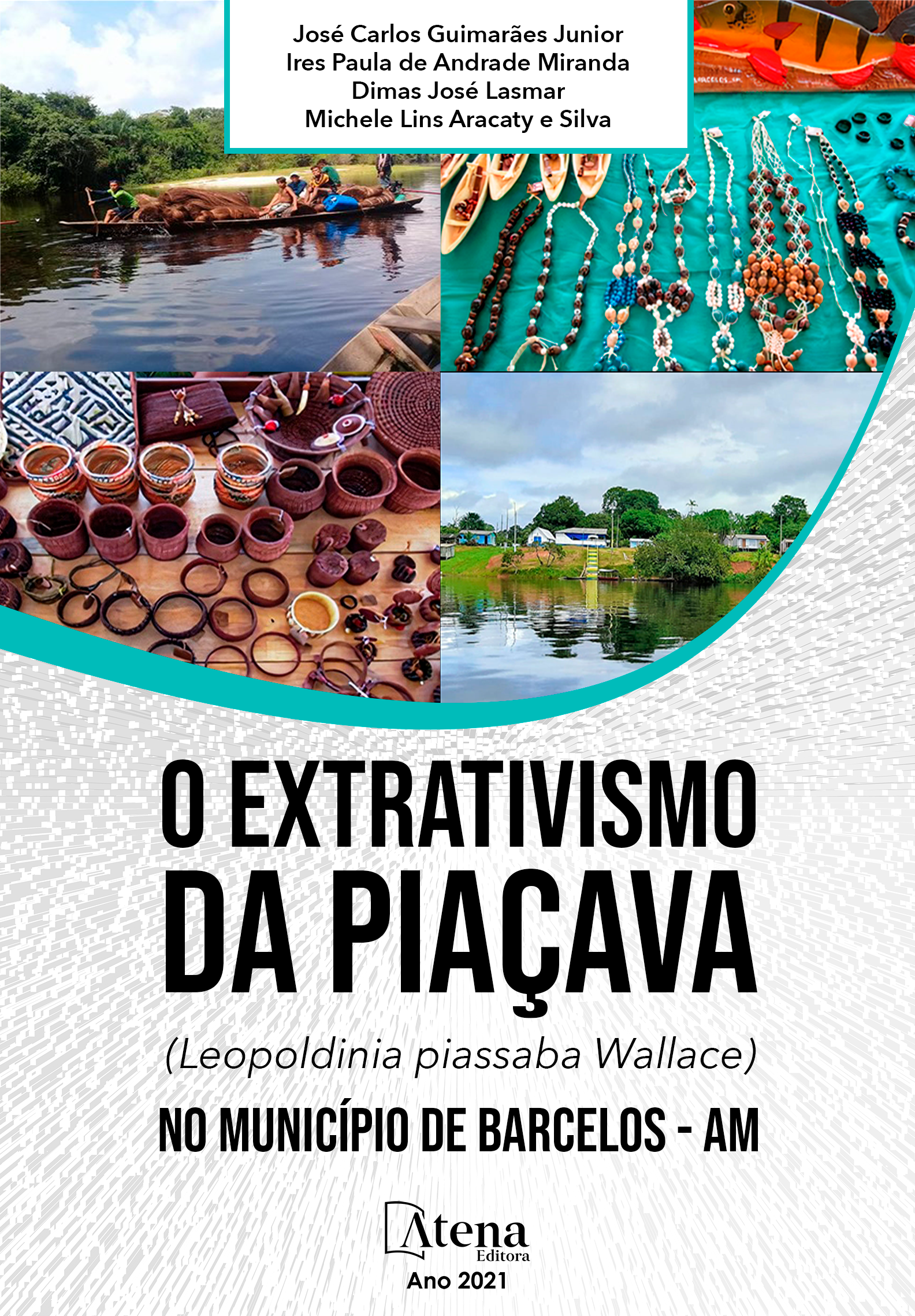
O EXTRATIVISMO DA PIAÇAVA (Leopoldinia piassaba Wallace) NO MUNICÍPIO DE BARCELOS - AM
A presente tese teve como objetivo a identificação das relações entre os extrativistas da piaçava (Leopoldinia piassava Wallace) com os comerciantes e artesãos que atuam no município de Barcelos - AM, representadas por associações e suas participações em programas de políticas públicas, oferecidos pelo Governo Federal, Estadual e Municipal do Estado do Amazonas. Foi realizado um estudo de caso no Núcleo de Arte e Cultura Indígena de Barcelos (NACIB), uma associação que utiliza a piaçava como base da matéria-prima para a produção de artesanato. No município, o extrativismo da piaçava beneficia direta e indiretamente os diversos atores que vivem dessa atividade, da comercialização, ou em bens e serviços, como na produção de artesanato. A metodologia adotada para a coleta de dados fundamentou-se de observações diretas de algumas operações na cadeia produtiva da piaçava, com a submissão de questionário semiestruturado e de entrevistas com seus integrantes, artesãos e profissionais que vivem dessa atividade, de maneira que possa contribuir com a comunidade para fortalecer sua base econômica - além de pesquisas em documentos nos órgãos governamentais tais como Companhia Nacional de Abastecimento (CONAB), Secretaria de Meio Ambiente do Amazonas (SEMA) e Prefeitura Municipal de Barcelos - AM. Para a análise dos aspectos socioeconômicos dos atores envolvidos com a produção de artesanato, por meio do estudo de caso do Núcleo de Arte e Cultura Indígena de Barcelos (NACIB), foi empregada a ferramenta da matriz SWOT, que avalia os pontos fortes, fracos oportunidades e ameaças.
Dessa forma, foi possível identificar a ocorrência de conflitos na cadeia produtiva da piaçava, decorrentes da total dependência dos piaçaveiros em relação aos comerciantes da fibra, tanto para a comercialização da piaçava, quanto a venda de produtos de primeira necessidade. No que se refere ao NACIB, nas atividades de produção e comercialização do artesanato, verificou-se que as ações de venda e entrega ao mercado consumidor, de modo geral, apresentaram custo do frete expressivamente elevado comparativamente ao preço da peça de artesanato, chegando em glumas ocasiões a ser superior.
O EXTRATIVISMO DA PIAÇAVA (Leopoldinia piassaba Wallace) NO MUNICÍPIO DE BARCELOS - AM
-
DOI: 10.22533/at.ed.297210809
-
Palavras-chave: Extrativismo. Piaçava. Artesanato. Cadeia produtiva. Políticas públicas
-
Keywords: Interrelationships. Piaçava. Craftsmanship. Productive chain. Public policy
-
Abstract:
The objective of this research was to identify the interrelationships between piassava extractivists (Leopoldinia piassava Wallace) with traders and artisans who work in the city of Barcelos - AM, represented by associations and their participation in public policy programs of the Federal and State Government and Municipalities of the State of Amazonas. A case study was carried out at the Barcelos Indigenous Art and Culture Center (NACIB), an association that uses piassava as raw material for the production of handicrafts. In the municipality, piassava extractivism directly and indirectly benefits the various actors who make a living from this activity, whether in the commercialization or in the commercialization of goods and services, such as the production of handicrafts. The methodology adopted for data collection was based on direct observation of some operations in the piassava production chain, sending a semi-structured questionnaire and interviews with its members, artisans and professionals who make their living from this activity, in order to contribute to the community and strengthen its economic base, in addition to researching documents in government agencies such as the National Supply Company (CONAB), the Amazonas Environment Secretariat (SEMA) and the Municipality of Barcelos - AM. The socioeconomic aspects of the actors involved in the production of handicrafts were analyzed through the case study of the Nucleus of Indigenous Art and Culture of Barcelos (NACIB), the SWOT matrix tool was used, which assesses potential, weaknesses, opportunities and threats. The results can contribute to the adoption of measures aimed at valuing handicrafts as a source of income and adding value to the piassava extractive chain and strengthening its economic autonomy, through the production of knowledge that facilitate the adoption of public policies and strategies for the readjustment of the production chain of this input. Thus, it was possible to identify the occurrence of conflicts in the piassava production chain, referring to the total dependence of piassava producers in relation to fiber traders, both for the sale of piassava and the sale of basic necessities. With regard to NACIB, the important variable in the process of production and marketing of handicraft, it deals with the process of sale and delivery to the consumer market, in general, given that the cost of freight is high, reaching a high situation , have a higher value than the price of the craft piece
-
Número de páginas: 132
- José Carlos Guimarães Junior
- Ires Paula de Andrade Miranda
- Dimas Jose Lasmar
- Michele Lins Aracaty e Silva


